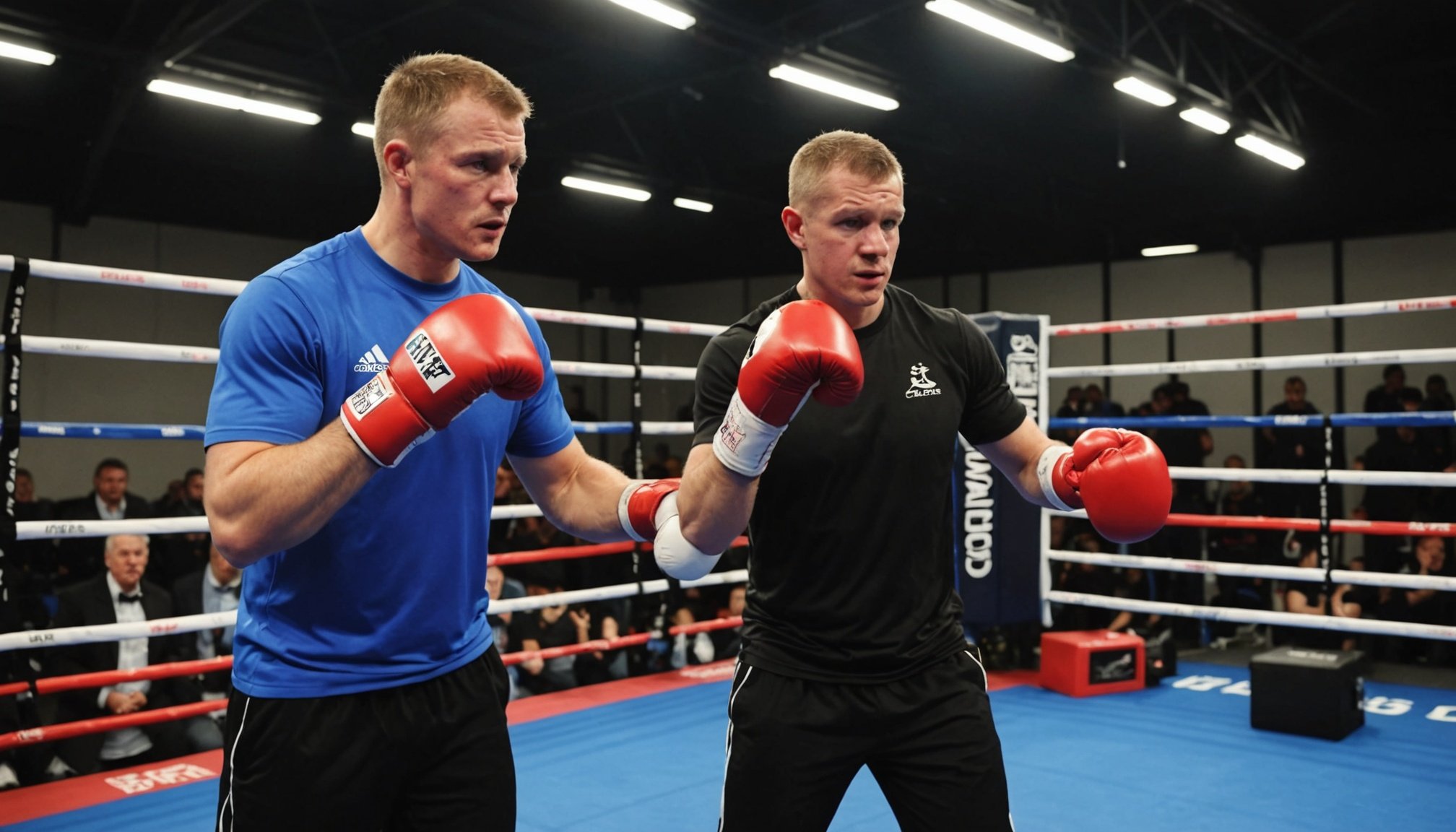Understanding Video Analysis in Boxing Coaching
Video analysis technology has revolutionised sports training and performance improvement, becoming a pivotal tool in boxing coaching. With video analysis, coaches can break down complex movements and strategies, offering athletes a visual representation of their techniques and areas needing improvement. This allows for a more precise evaluation compared to traditional methods.
The significance of video analysis lies in its capacity to provide accurate and measurable insights. By using these insights, coaches can identify fighters’ strengths and weaknesses, meticulously examining every jab, hook, and footwork pattern. This method enhances performance evaluation by offering a detailed, frame-by-frame examination of boxing matches or training sessions, allowing for targeted improvements.
Have you seen this : Championing Diversity: Cutting-Edge Strategies for UK Sports Clubs to Support Athletes with Disabilities
Boxing coaching tools, powered by video analysis, help trainers convey feedback effectively. For example, coaches can highlight the timing of punches or defensive maneuvers that require refinement. This visual tool fosters better understanding and retention of feedback, accelerating learning and skill development.
In summary, video analysis is not just an aid but a transformative element in boxing coaching. It empowers coaches and athletes alike, ensuring that training sessions are as effective and efficient as possible, driving overall performance improvement.
Additional reading : Mastering Peak Performance: UK Sports Psychologists’ Secrets to Conquering Athlete Anxiety
Implementing Video Analysis Techniques
Effective implementation of video analysis in boxing requires a structured approach to coaching strategies and training techniques. The integration begins with selecting the right video analysis software tailored for boxing. Various options cater to different needs, making it crucial to evaluate features such as slow-motion playback, annotation capabilities, and compatibility with existing training systems.
Once the software is chosen, it’s essential to develop a consistent framework. This involves creating a step-by-step process that seamlessly blends video analysis with traditional training techniques. Start by recording training sessions or matches, focusing on critical aspects like punch execution, footwork, and defensive strategies.
Next, establish a routine for reviewing footage. Coaches should schedule regular sessions to analyse clips, identifying patterns and areas for improvement. Engage athletes in these reviews to foster a deeper understanding of their performance. Encouraging them to self-evaluate alongside coach feedback enhances learning and ownership of their skill development.
Finally, incorporate insights gained from video analysis into daily training routines. Use these insights to refine techniques and adjust strategies, ensuring that athletes apply improvements consistently. This structured integration can significantly boost performance and drive performance improvement in a meticulous and measurable manner.
Case Studies in UK Boxing
Exploring the realm of UK boxing examples reveals fascinating case studies that underscore the power of video analysis in fostering successful outcomes. Many British boxing coaches have embraced video analysis to revolutionise their training methods.
Examples of Video Analysis in Action
Consider the practices of notable boxing coaches who have witnessed dramatic improvements in fighter performance through calculated video insights. These coaches utilise detailed footage to dissect each match component, leading to profound technical refinements. For instance, by comparing traditional coaching methods with video-assisted approaches, the benefits become evident. Video analysis provides a nuanced understanding of a fighter’s actions that may be missed otherwise.
Lessons Learned from Case Studies
These case studies expose common pitfalls, such as over-reliance on technology without human insight. Nonetheless, the key takeaways focus on balancing video data with intuition to excel. Importantly, video analysis impacts decision-making processes more effectively than traditional approaches. It is a transformative tool in determining training priorities.
UK boxing examples demonstrate the pivotal role video analysis plays in identifying strengths and weaknesses. By implementing these lessons, coaches can refine strategies, enhance fighter performance, and foster innovative practices in training sessions.
Best Practices for Maximising Video Analysis Potential
To fully harness the performance enhancement benefits of video analysis in boxing, adopting effective coaching best practices is essential. A well-defined video review schedule can dramatically amplify training efficiency. Coaches should aim to incorporate regular analysis sessions, establishing a rhythm that complements the training calendar.
Engaging athletes throughout the analysis process is crucial for deeper skill development. By involving them in dissecting footage, athletes gain a broader perspective on their performance, aiding in self-assessment. This practice promotes responsibility for personal growth, encouraging fighters to take active roles in their progress.
Setting measurable goals is another vital step to optimise the outcomes of video analysis. Clear objectives should be defined, focusing on specific skills or techniques identified from footage reviews.
- Regular feedback loops are instrumental, offering insight and guiding athletes to achieve outlined targets.
- Implementing adjustable action plans tailored to each athlete fosters an adaptive coaching environment.
By embedding these strategies into training programs, coaches can significantly boost performance, leveraging video insights to craft a path towards consistent improvement. These practices ensure that video analysis becomes an integral part of an evolving training paradigm.
The Future of Video Analysis in Boxing
Advancements in video analysis technology herald significant innovations in boxing coaching. The emergence of AI-assisted tools and real-time analytics is set to redefine how coaches and athletes approach training sessions. These cutting-edge methods surpass traditional analysis by offering immediate feedback during live sessions, thus aiding in on-the-fly adjustments.
Emerging Technologies
Real-time data-capture systems and AI applications transform video analysis, enabling a more dynamic and responsive approach to training. These technologies identify subtle errors in form or timing, allowing for immediate corrections and thereby enhancing the efficiency of each session. Notably, AI can predict potential weaknesses, offering targeted performance improvement strategies.
Predictions for Evolution
As these technologies develop, there is potential for greater customisation in coaching techniques. The integration of wearable tech with video analysis could provide biometric data, leading to a comprehensive understanding of an athlete’s physical condition and performance.
UK Boxing Leading the Way
With its rich history and competitive spirit, UK boxing is strategically positioned to become a leader in adopting these innovations. By leveraging future video analysis technologies, UK coaches can refine training methodologies, ensuring their fighters remain at the forefront of the sport globally.





